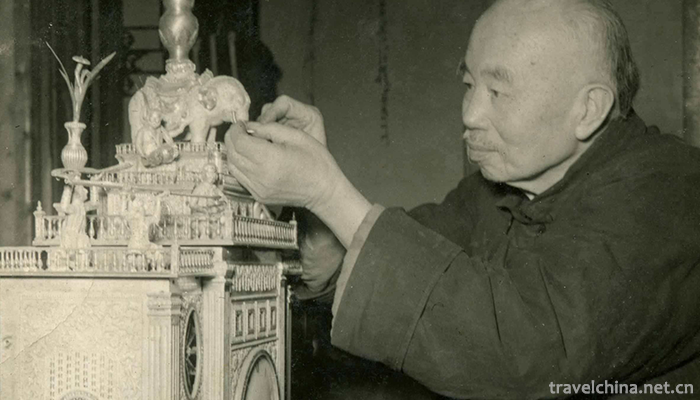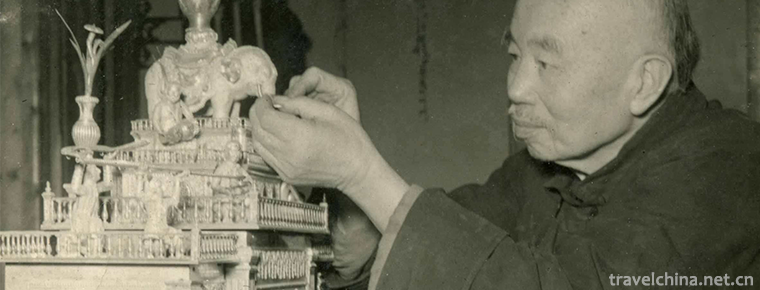Ancient Clock Repair Skills
Ancient Clock Repair Skills
Behind the Cining Palace in the Palace Museum of Beijing, there is a row of red pillars and grey tiles. A group of "craftsmen" have been dealing with the treasures of the deep palace from time to time in this tranquility. Among them, Wang Jin and Zhang Haonan's ancient clockwork repair technique is the only feat of the Palace Museum without fault in more than 300 years. In December 2014, this skill was listed in the fourth batch of national intangible cultural heritage list. If the calculation begins after the founding of the People's Republic of China, Wang Jin is the third generation of inheritance of ancient clocks and watches restoring non-legacy skills, while Haonan is the fourth generation.
A clocks and watches to be repaired need to be photographed, recorded and repaired. After disassembly, cleaning, repairing, assembling and debugging, the clocks and watches can be stored in the warehouse until they are in normal operation. Relatively simple repairs of ancient clocks and watches often lasted several months, and difficult ones even had to be repaired intermittently for one year. Wang Jin sat in his office every morning for eight to five days, dealing with dusty cultural relics for decades.
On this day, Wang Jin carefully photographed a "tortoise tower with silver and bronze flower clock" from all angles, then removed its label, picked out the protective cotton wadding bit by bit, and studied the scheme that could make it work again. His apprentice, Haonan, stood beside him, and wrote on his palace museum cultural relics restoration and protection voucher: gluing the shell, restoring the function of the machine parts.
At the age of 35, Haonan has been in the palace for more than 10 years. In less than five years, Wang Jin will reach the retirement age. Outside, some organizations have thrown high-paid olive branches to Wang Jin. "You can't live without it! I've been here for almost half my life, and I want to continue to pass on the repair techniques here. Wang Jin told reporters with a smile that he did not stop his work when he spoke.
In the afternoon, the clocks and watches hall in Fengxian Palace of the Palace Museum, where the awakened memory of the time of the Palace Museum meets the world. By contrast, the clocks and watches in Xisanli are so quiet that the sun shines through the white blinds, tweezers and watchcore parts are rubbed gently, and the craftsmen are pursuing the echo of history here.


-
2.Chengdu Panda Base
No. 1375 panda Road, Chenghua District, Chengdu city, Sichuan province
Time 2018-09-28 -
3.Jiulong Mountain Rural Tourism Scenic Area
Mianzhu Jiulongshan Rural Tourism Scenic Area is located in the northwest of Mianzhu City, Sichuan Province. It is a characteristic rural tourism area
Time 2018-12-22 -
4.Yang Guan
Yangguan is the throat of ancient land transportation in China and the only pass along the southern Silk Road. Located in the southwest of Dunhuang City, Gansu Province
Time 2019-03-03 -
5.Heap harmonics
"Heap Harmony" first spread in the Yarlung Zangbo River Basin, the high terrain west of Shigaze to the whole area of Ali circle dance, and later gradually prevailed in Lhasa. It was the firs
Time 2019-04-28 -
6.Production Techniques of Liuyang Fireworks
Liuyang fireworks production in Hunan has a long history. According to records, it began in Tang Dynasty and flourished in Song Dynasty. During Kangxi period of Qing Dynasty, the production had a cons
Time 2019-05-13 -
7.Luochuans drums
Luochuan Yigu, a traditional dance in Luochuan County, Shaanxi Province, is one of the national intangible cultural heritage.
Time 2019-05-15 -
8.Munaozaiwa
In May 2011, Munaozaiwa declared by Dehong Dai Jingpo Autonomous Prefecture of Yunnan Province was listed in the third batch of national intangible cultural heritage list with the approval of the Stat
Time 2019-06-06 -
9.Qin an Xiaoqu
Qin'an Xiaoqu, also known as the old tune of Qin'an, is one of the national intangible cultural heritages. It is an ancient traditional folk art variety formed and mainly popular in Qin'an and other c
Time 2019-06-10 -
10.Making Skills of Sheng Xifu Leather Cap
Shengxifu leather cap production skills need to go through the whole process from matching, picking, blowing, brushing, flat leather, shaving, hand needle sewing to machine sewing, and finally complet
Time 2019-06-14 -
11.An Zhongrong
An Zhongrong (- 942 years), Zi tie Hu, Shuozhou (now Shuozhou, Shanxi). The generals of the Five Dynasties and Ten Kingdoms during the late Tang Dynasty and the Late Jin Dynasty.
Time 2019-09-11 -
12.Climate of Yibin
Yibin City has a humid monsoon climate in the middle subtropics, and the low hills and river valleys have the climate attributes of south subtropics. It has the characteristics of mild climate, abundant heat, abundant rainfall, suitable illumination, long fr
Time 2020-12-18